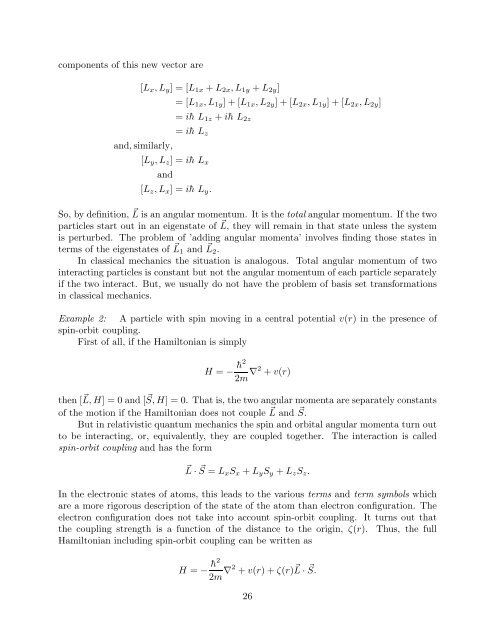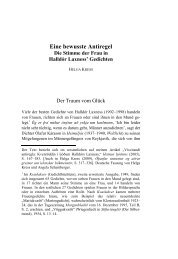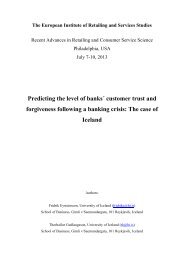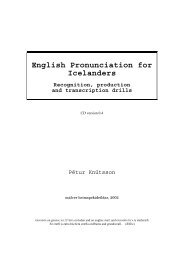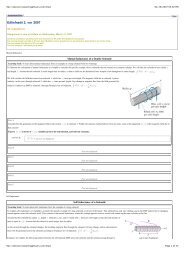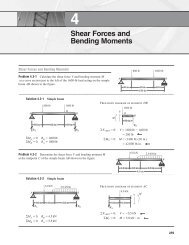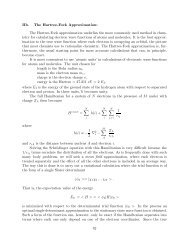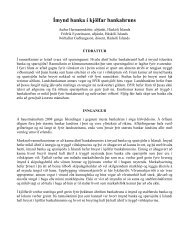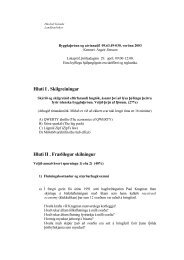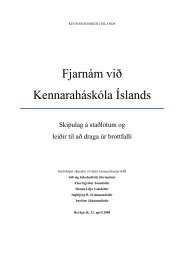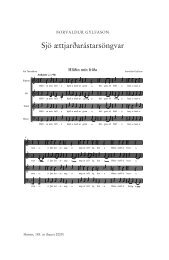Addition of Angular Momenta
Addition of Angular Momenta
Addition of Angular Momenta
Create successful ePaper yourself
Turn your PDF publications into a flip-book with our unique Google optimized e-Paper software.
components <strong>of</strong> this new vector are<br />
[L x , L y ] = [L 1x + L 2x , L 1y + L 2y ]<br />
and, similarly,<br />
= [L 1x , L 1y ] + [L 1x , L 2y ] + [L 2x , L 1y ] + [L 2x , L 2y ]<br />
= i¯h L 1z + i¯h L 2z<br />
= i¯h L z<br />
[L y , L z ] = i¯h L x<br />
and<br />
[L z , L x ] = i¯h L y .<br />
So, by definition, ⃗ L is an angular momentum. It is the total angular momentum. If the two<br />
particles start out in an eigenstate <strong>of</strong> ⃗ L, they will remain in that state unless the system<br />
is perturbed. The problem <strong>of</strong> ’adding angular momenta’ involves finding those states in<br />
terms <strong>of</strong> the eigenstates <strong>of</strong> ⃗ L 1 and ⃗ L 2 .<br />
In classical mechanics the situation is analogous. Total angular momentum <strong>of</strong> two<br />
interacting particles is constant but not the angular momentum <strong>of</strong> each particle separately<br />
if the two interact. But, we usually do not have the problem <strong>of</strong> basis set transformations<br />
in classical mechanics.<br />
Example 2: A particle with spin moving in a central potential v(r) in the presence <strong>of</strong><br />
spin-orbit coupling.<br />
First <strong>of</strong> all, if the Hamiltonian is simply<br />
H = − ¯h2<br />
2m ∇2 + v(r)<br />
then [ ⃗ L, H] = 0 and [ ⃗ S, H] = 0. That is, the two angular momenta are separately constants<br />
<strong>of</strong> the motion if the Hamiltonian does not couple ⃗ L and ⃗ S.<br />
But in relativistic quantum mechanics the spin and orbital angular momenta turn out<br />
to be interacting, or, equivalently, they are coupled together. The interaction is called<br />
spin-orbit coupling and has the form<br />
⃗L · ⃗S = L x S x + L y S y + L z S z .<br />
In the electronic states <strong>of</strong> atoms, this leads to the various terms and term symbols which<br />
are a more rigorous description <strong>of</strong> the state <strong>of</strong> the atom than electron configuration. The<br />
electron configuration does not take into account spin-orbit coupling. It turns out that<br />
the coupling strength is a function <strong>of</strong> the distance to the origin, ζ(r). Thus, the full<br />
Hamiltonian including spin-orbit coupling can be written as<br />
H = − ¯h2<br />
2m ∇2 + v(r) + ζ(r) ⃗ L · ⃗S.<br />
26


